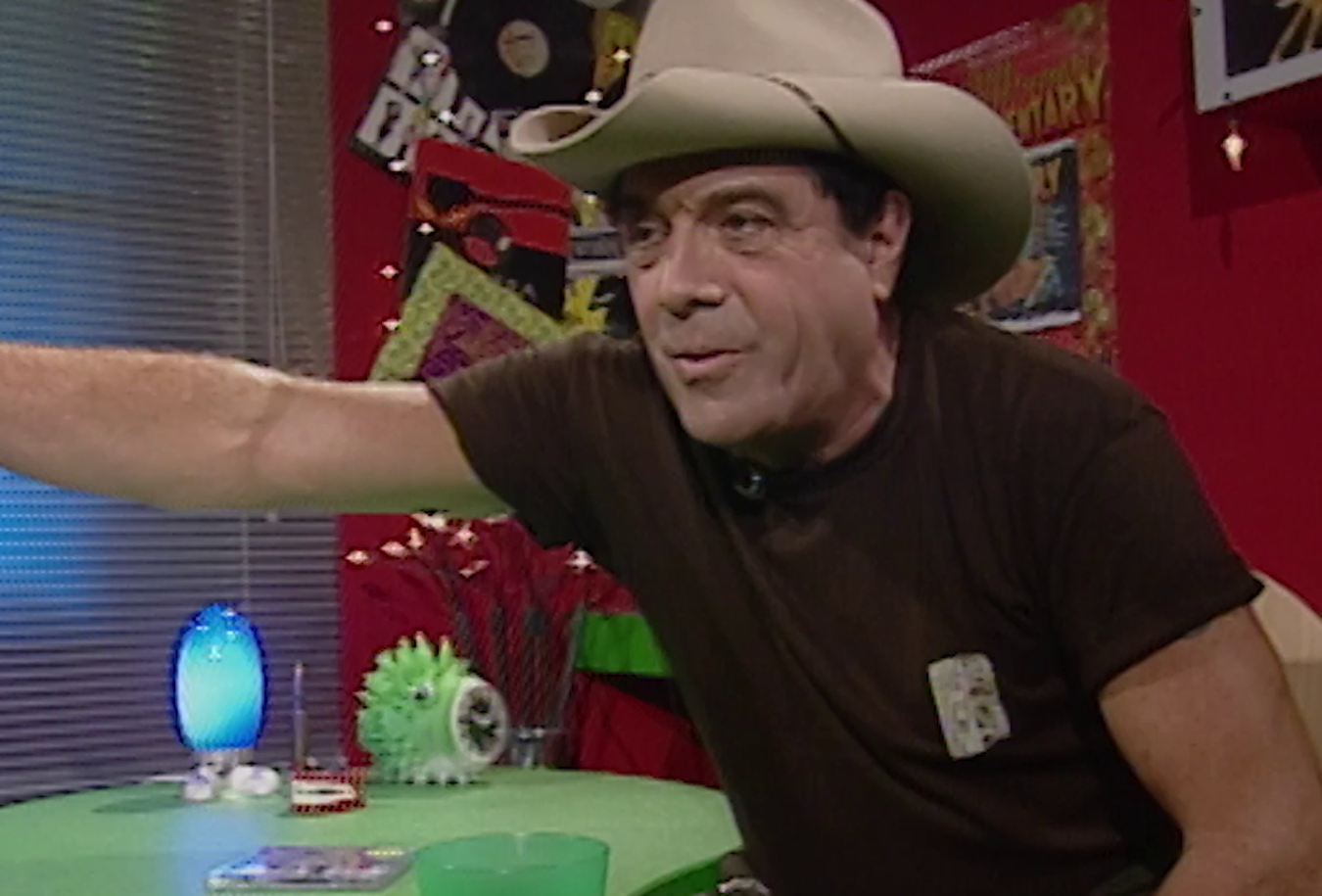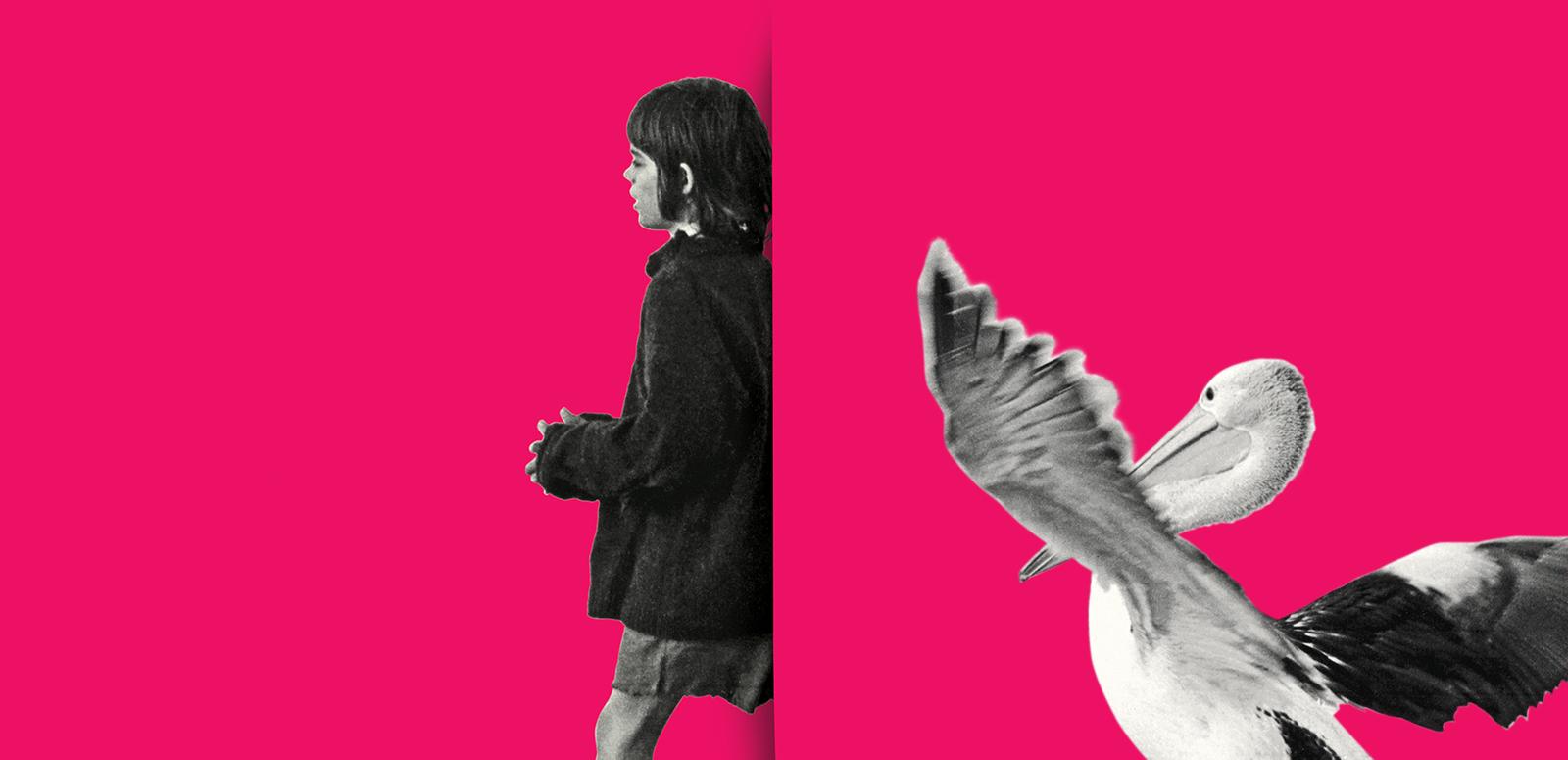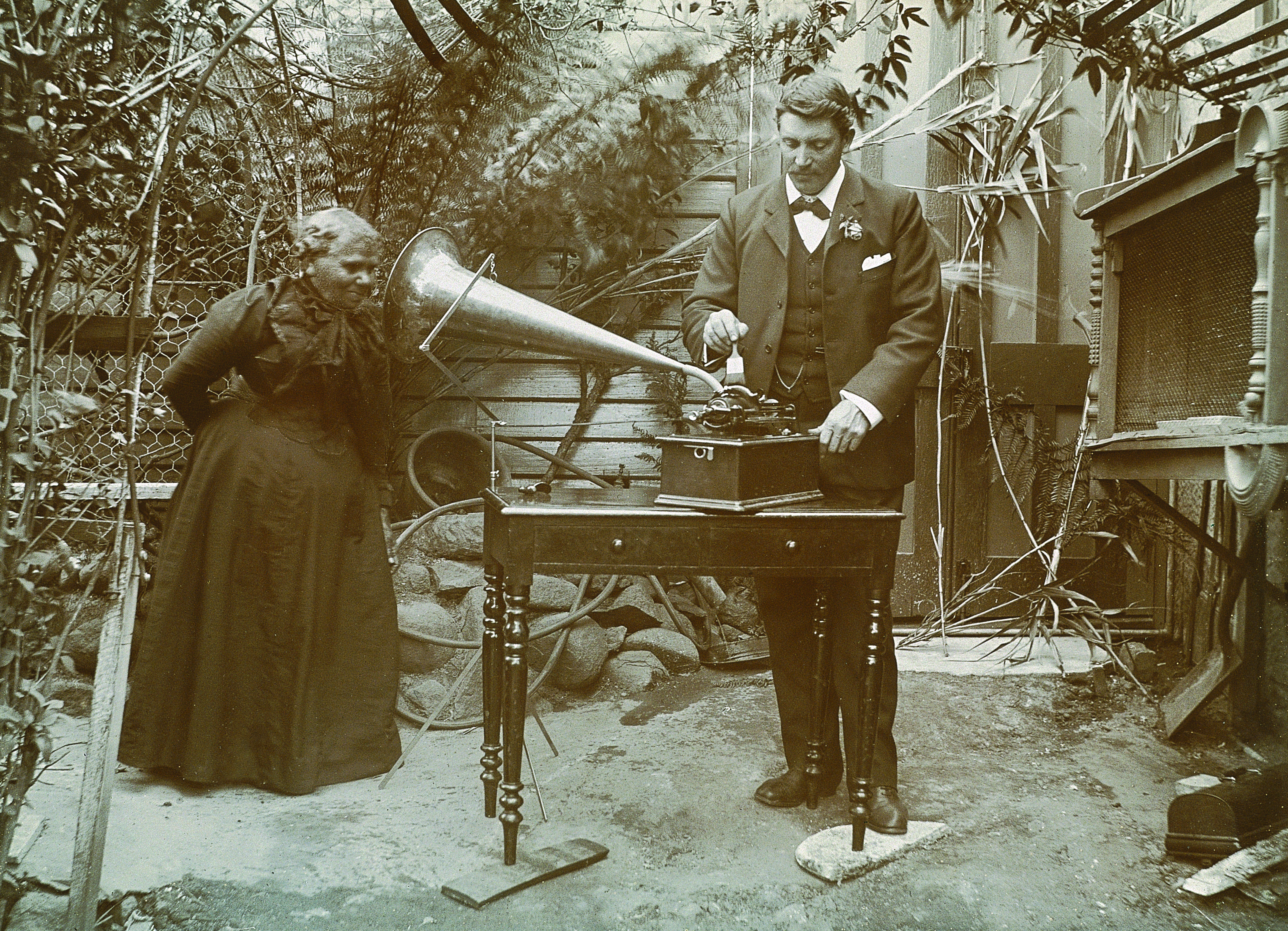

Annual report 2016-17
Strategic priority 4: Indigenous connections
Australia’s Indigenous cultures are some of the longest continuous cultures in the world. Some of Australia’s oldest audiovisual records are a ‘living’ testimony of Indigenous cultural customs and ways of life. Indigenous communities are also keen adopters and agile users of audiovisual media for cultural maintenance, from mainstream feature film and published popular music to community production in language. Audiovisual media, particularly in the context of remote Indigenous broadcasting and online multimedia publication, adds a uniquely Indigenous voice to the canon of contemporary audiovisual production and supports national priorities such as closing the gap in digital literacy and employment, and preserving Indigenous languages.
Outcome: We will work with Indigenous communities and partners to showcase Indigenous Australian stories and works, provide training opportunities in audiovisual conservation and ensure the appropriate management of Indigenous audiovisual collection materials.
| Objective | Initiatives/strategies to achieve against outcome and objectives, 2016–17 to 2019–20 |
Target 2016-17 | Result 2016-17 |
|---|---|---|---|
| Objective 4A Work with communities and leaders in the sector to ensure that the NFSA is aligned with the cultural directions and aspirations of traditional owners |
4A.1 Establish an Indigenous Connections subcommittee of the NFSA Board to guide our policy, strategy, partnership development and delivery | Indigenous Connections subcommittee established and operating | Achieved |
| 4A.2 Manage NFSA’s Indigenous collection to the highest standards and according to best practice | Indigenous collection managed in line with the NFSA Collection Policy | Achieved | |
| 4A.3 Provide training and development opportunities for Indigenous archive professionals in the areas of preservation and conservation | NFSA partners to deliver the Indigenous Remote Archival Fellowship program | Achieved | |
Objective 4B Celebrate and showcase the stories of Australia’s Indigenous Peoples through the media of recorded sound, film and digital, both nationally and internationally |
4B.1 Embed the delivery of a suite of Indigenous programs into NFSA programming schedules | Four dedicated Indigenous program elements delivered each calendar year |
Achieved |
| 4B.2 Work with partners to redevelop ‘Black Screen’ to communicate Indigenous screen culture to audiences nationally and internationally | Black Screen screenings delivered to 3,500 participants | Achieved | |
Objective 4C Develop plans and guidelines to implement concrete actions that build respectful relationships and create opportunities for Indigenous Australians |
4C.1 Develop and implement a Reconciliation Action Plan (RAP) for the NFSA |
RAP in development | Achieved |
| 4C.2 Continue to increase awareness, and confidence in applying Indigenous Cultural and Intellectual Property (ICIP) rights across the NFSA workforce | Ongoing support for staff across the NFSA in understanding and applying ICIP protocols | Achieved |
Criterion source: Corporate Plan 2016–17 to 2019–20 page 9
Objective 4A
Work with communities and leaders in the sector to ensure that the NFSA is aligned with the cultural directions and aspirations of traditional owners
4A.1 Establish an Indigenous Connections subcommittee of the NFSA Board to guide our policy, strategy, partnership development and delivery
| Target | Result |
|---|---|
| Indigenous Connections subcommittee established and operating | Acheived |
Criterion source: Corporate Plan 2016–17 to 2019–20 page 9
What we achieved
In 2016–17 we established the Indigenous Connections Committee, which serves as an advisory committee to the NFSA Board. Wayne Denning, NFSA Board Deputy Chair, chairs the committee, and the independent expert members are Terri Janke, Jason Eades and Amanda Hayman.
The committee will help to ensure permanent access to Australia’s First Peoples’ audiovisual cultural materials, knowledge, language and stories in a manner aligned with traditional owners’ cultural directions and aspirations.
4A.2 Manage the NFSA’s Indigenous collection to the highest standards and according to best practice
| Target | Result |
|---|---|
| Indigenous collection managed in line with the NFSA Collection Policy | Achieved |
Criterion source: Corporate Plan 2016–17 to 2019–20 page 9
What we achieved
We are the custodian of over 30,000 audiovisual works on the stories of Australia’s First Peoples and we ensure that we manage this collection to the highest standards and according to best practice.
In May 2017 we launched our new Collection Policy (see 2A.1 for details). This policy sets out the guiding principles for the development, preservation and sharing of the national audiovisual collection, including Managing Indigenous Cultural Material (section 7) which states that:
- we work in partnership with communities, cultural knowledge holders, artists, filmmakers and musicians to respectfully manage these cultural materials
- we identify and observe Indigenous Cultural Intellectual Property protocols and develop cultural agreements with First Peoples communities
- we support the development of cultural agreements that will not only outline the way we work with these communities but also champion the inherent rights of First Peoples to maintain, control, protect and develop their cultural heritage, traditional knowledge and cultural expressions.
On 9 February 2017, eight Fanny Cochrane Smith wax cylinder recordings were inscribed on the UNESCO Australian Memory of the World Register. We developed the register nomination in collaboration with the Tasmanian Museum and Art Gallery (who hold the original cylinders), members of the Tasmanian Aboriginal community (in whom cultural authority is vested), and international experts in the field. We have created and stored preservation back-up copies of the cylinders
(see the snapshot on page 40).
4A.3 Provide training and development opportunities for Indigenous archive professionals in the areas of preservation and conservation
| Target | Result |
|---|---|
| NFSA partners to deliver Indigenous Remote Archival Fellowship program | Achieved |
Criterion source: Corporate Plan 2016–17 to 2019–20 page 9
What we achieved
In 2016–17 we partnered with the Indigenous Remote Communications Association (IRCA) and the Australian Institute of Aboriginal and Torres Strait Islander Studies (AIATSIS) to deliver the Indigenous Remote Archival Fellowship program. We initiated this fellowship in 2014, partnering with IRCA in 2015 and then including
AIATSIS this year.
The aim of the fellowship is to build and connect people working on country with those working at the NFSA and AIATSIS, leading to shared learnings in the management and preservation of cultural collections.
In 2016–17 the fellowship was awarded to Pitjantjatjara Kankunytjatjara Media (PY Media), who have played a historic role in the development of media and communication services in the Anangu Pitjantjatjara Yankunytjatjara (APY) Lands region.
Staff from the NFSA and AIATSIS will travel to Umuwa, South Australia, in 2017 to provide PY Media staff and the community with professional training through the delivery of workshops that cater to the needs of PY Media in the area of archival practices and management of cultural collection. PY Media staff will also have the opportunity, as part of the fellowship, to travel to Canberra to undertake training at the NFSA and AIATSIS.
Snapshot
Enriching the memory of the world
In 2017, eight Fanny Cochrane Smith wax cylinder recordings were inscribed on the UNESCO Australian Memory of the World Register.
Cochrane Smith was the last surviving fluent speaker of any of the many original Tasmanian Aboriginal languages. The wax cylinders, originally recorded in 1899 and 1903, capture her singing and speaking in her own language. For Tasmanian Aborigines, these recordings provide a tangible connection to the voice of ancestors. For Cochrane Smith’s descendants, they provide a legacy of cultural knowledge and a record of family oral history.
The register, which to date only includes
57 works, recognises the country’s greatest cultural treasures. Inscription on the register highlights the importance that sound recordings play in the development of Australian society and culture. It also recognises the role of cultural collecting bodies in preserving and contextualising those recordings.
The register nomination was developed in collaboration with the Tasmanian Museum and Art Gallery (who hold the original cylinders), members of the Tasmanian Aboriginal community (in whom cultural authority is vested), and international experts in the field. We have created and stored preservation back-up copies of the cylinders.

Horace Watson making a recording of Mrs Fanny Smith c. 1903. Courtesy Tasmanian Museum and Art Gallery.
Objective 4B
Celebrate and showcase the stories of Australia’s Indigenous Peoples through the media of recorded sound, film and digital, both nationally and internationally
4B.1 Embed the delivery of a suite of Indigenous programs into NFSA programming schedules
| Target | Result |
|---|---|
| Four dedicated Indigenous program elements delivered each calendar year | Achieved |
Criterion source: Corporate Plan 2016–17 to 2019–20 page 9
What we achieved
In 2016–17 we successfully embedded the delivery of a suite of Indigenous programs in our programming calendar. These programs included screenings, In Conversation and Q&A events, along with a new educational program. This included:
- Indigenous Representation on Screen – a new educational program available for school years 5–8 in our theatrette
- Black Screen season – this included Women of the Sun (1981), Linta: The Flame (1981) and 88.9 Redfern Radio (1988) from 9 to 28 August 2016 in Arc cinema
- Black Chat: Ten Indigenous Icons – a discussion in our theatrette on 12 August 2016 which explored 10 iconic Indigenous Australian screen roles and their contribution to our cultural history
- Footprints On Our Land (Fiske, 2016) and Ella (Watkin, 2016) – screenings and Q&As in Arc cinema in partnership with the Canberra International Film Festival from 27 October to 6 November 2016
- Zach’s Ceremony (Pedersen, 1991) – screening and Q&A with filmmaker Aaron Pedersen and stars Zach and Alec Doomadgee, on 10 December 2016 in Arc cinema
- Milestones Revisited – this recognised two significant milestones in Indigenous history: 50 years since the 1967 referendum and 25 years since the High Court of Australia’s ground-breaking Mabo decision. We screened documentary, TV and newsreel coverage from before and after these key moments as part of our daily program in Arc cinema from 1 May to 30 June 2017
- In Conversation with Christine Anu – a night of music and memories for National Reconciliation Week on 2 June 2017 in Arc cinema.
4B.2 Work with partners to redevelop ‘Black Screen’ to communicate Indigenous screen culture to audiences nationally and internationally
| Target | Result |
|---|---|
| Black Screen screenings delivered to 3,500 participants | 3,582 participants |
Criterion source: Corporate Plan 2016–17 to 2019–20 page 9
What we achieved
Black Screen provides free community access to contemporary short films and documentaries by Indigenous directors, producers and screenwriters. The program remains in high demand around the country as part of an ever-increasing awareness of, and desire for, Indigenous stories and films. Black Screen events are often part of community events, celebrations and festivals in regional and remote areas, such as NAIDOC Week, Sorry Day and National Reconciliation Week. Attendance at Black Screen for 2016–17 totalled 3,582, achieving our target.
A large percentage of Black Screen users are from government agencies and not-for-profit community groups, with a high rate of repeat users for the service.
We are redeveloping the Black Screen model in 2017–18
to deliver the program to a wider audience.
Objective 4C
Develop plans and guidelines to implement concrete actions that build respectful relationships and create opportunities for Indigenous Australians
4C.1 Develop and implement a Reconciliation Action Plan (RAP) for the NFSA
| Target | Result |
|---|---|
| RAP in development | Achieved |
Criterion source: Corporate Plan 2016–17 to 2019–20 page 9
We have developed a draft Reconciliation Action Plan (RAP) which has involved consultation with the newly formed Indigenous Connections committee in addition
to the NFSA’s Leadership Team and Human Resources.
We will form a RAP Working Group in the second half of 2017 with nominations open to all staff. This group will act as champions for the RAP.
Once the working group is formed, and the final RAP has been developed and approved, it will then be sent to Reconciliation Australia for endorsement by the end of 2017. An action item in our RAP is that cultural awareness training will be offered to all of our staff.
4C.2 Continue to increase awareness, and confidence in applying Indigenous Cultural and Intellectual Property (ICIP) rights across the NFSA workforce
| Target | Result |
|---|---|
| Ongoing support for staff across the NFSA in understanding and applying ICIP protocols |
Achieved |
Criterion source: Corporate Plan 2016–17 to 2019–20 page 9
Tasha James, Manager, Indigenous Connections, commenced with us in October 2016 and has educated and supported staff across the NFSA in applying ICIP rights and Indigenous cultural protocols.
Our Indigenous Connections committee will review our ICIP guidelines in 2017 and, once they are updated, we will roll out targeted training for our staff to increase awareness of, and confidence in, applying these protocols and guidelines in their work.
The National Film and Sound Archive of Australia acknowledges Australia’s Aboriginal and Torres Strait Islander peoples as the Traditional Custodians of the land on which we work and live and gives respect to their Elders both past and present.